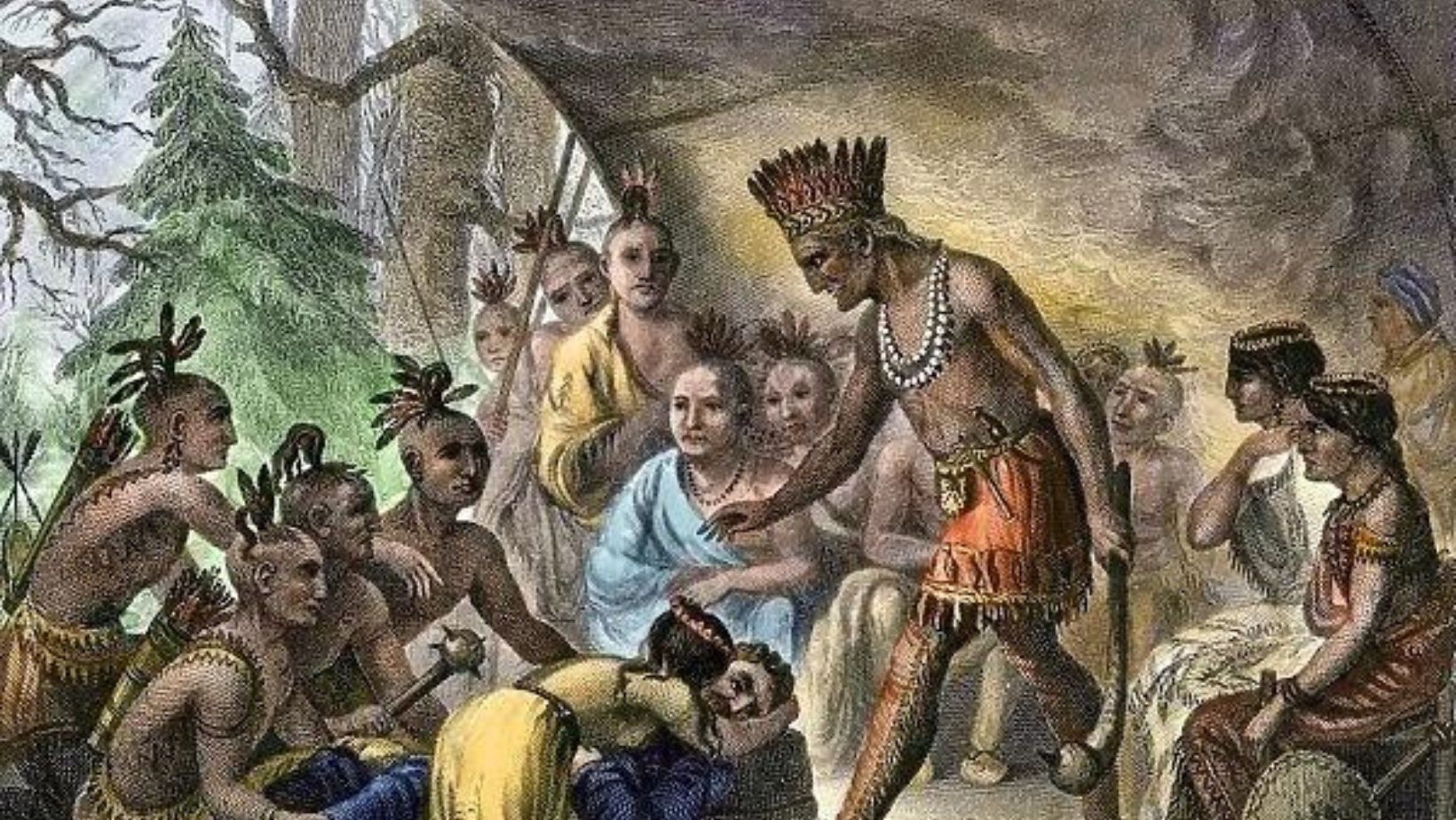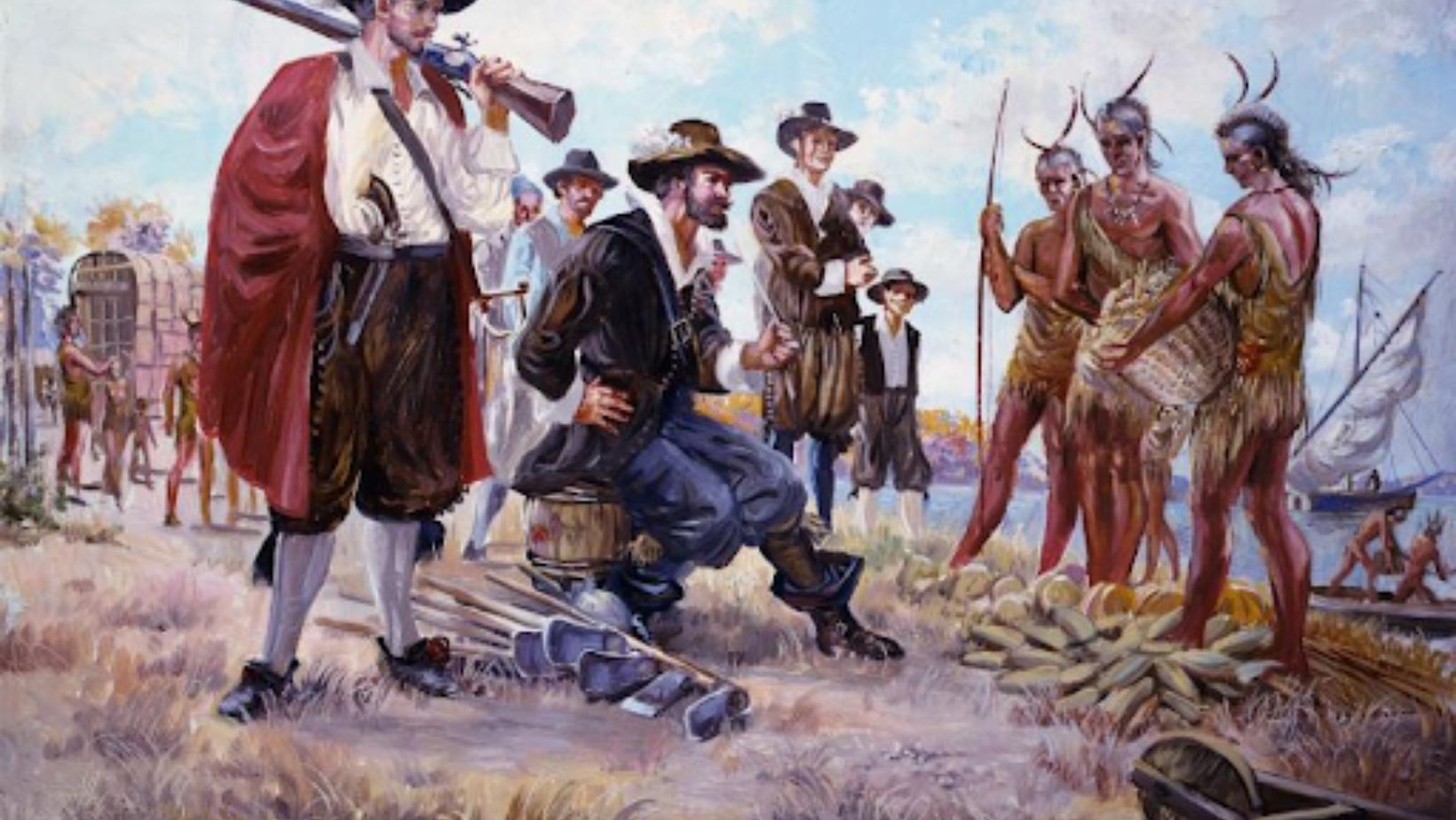Chief Powhatan stands as a pivotal figure in Virginia’s history. As the leader of the Powhatan Confederacy, he played a crucial role during the early years of English colonization. His interactions with the Jamestown settlers in 1607 shaped the future of both Native Americans and Europeans in the region. Powhatan’s diplomacy, strategies, and conflicts offer a fascinating glimpse into a time of great change. Understanding his significance helps us appreciate the complex relationships that formed during this pivotal period. Join us as we explore the life and legacy of Chief Powhatan, the man behind Virginia’s founding history.
Early Life and Background of Chief Powhatan

Chief Powhatan was born around 1540 in the region now known as Virginia. His real name was Wahunsenacawh, and he belonged to a powerful lineage. His father, the paramount chief, ruled a network of tribes that would later form the Powhatan Confederacy. This confederacy was a collection of over 30 Algonquian-speaking tribes.
Geographically, the Powhatan Confederacy stretched across a significant portion of Virginia, from the Atlantic coast to the falls of the James River. This strategic location allowed Powhatan to control vital resources and trade routes. The Confederacy thrived on agriculture, hunting, and fishing, providing a stable foundation for Powhatan’s leadership.
As he grew up, Powhatan learned the ways of diplomacy and warfare, skills essential for uniting the diverse tribes under his command. His early life and family background would shape his future decisions and strategies, setting the stage for his crucial role during the arrival of the English settlers in Jamestown.
The Chief Powhatan Confederacy
The Powhatan Confederacy was a powerful alliance of over 30 tribes in Virginia. It was led by Chief Powhatan and encompassed various Algonquian-speaking peoples. The confederacy’s structure was organized around a paramount chief, who held authority over local chiefs from the member tribes. This hierarchy allowed for coordinated efforts in warfare, trade, and diplomacy.
Economically, the confederacy thrived on agriculture, primarily growing corn, beans, and squash. They utilized trade networks to exchange goods, including furs and food, with neighboring tribes and Europeans. The confederacy’s access to the Atlantic Ocean facilitated fishing and trade routes. This economic strength bolstered their political influence, enabling Powhatan to assert control over surrounding regions.
Politically, the confederacy was a significant force in Virginia. Its unity allowed for collective defense against potential threats, including rival tribes and European settlers. Powhatan’s ability to negotiate alliances and manage resources made the confederacy a crucial player during the early colonial period. The Powhatan Confederacy’s legacy is a testament to the complexity of Native American governance and cooperation before European colonization.
Encounter with English Colonizers
The initial contact between Chief Powhatan and English settlers occurred in 1607, the same year Jamestown was founded. Powhatan was intrigued by the newcomers, seeing them as potential allies and trade partners. However, he was also cautious, aware of the English’s advanced weapons and unfamiliar intentions. Powhatan sent his men to observe the settlers and gauge their capabilities.
Upon meeting, Powhatan recognized that the settlers had different customs and technologies. The English were eager to establish trade, particularly in food and furs, which intrigued Powhatan. However, he was wary of their motives and the potential threat they posed to his people. Powhatan’s first impressions were mixed; he saw opportunity but also the risk of conflict.
The relationship between Powhatan and the English settlers was complex from the start. While initial meetings involved exchanges of gifts and resources, underlying tensions began to surface. Powhatan aimed to maintain control over his territory while navigating this new interaction. This encounter marked the beginning of a complicated and often hostile relationship between the Powhatan Confederacy and the English colonizers.
Relationship with John Smith

The relationship between Chief Powhatan and Captain John Smith was pivotal in the early days of the Jamestown settlement. John Smith arrived in Virginia in 1607 and quickly recognized the importance of establishing a rapport with Powhatan. Initially, Smith sought to negotiate trade and secure food supplies for the struggling colonists. Powhatan, in turn, saw Smith as a potential ally, though he was cautious about the English settlers’ true intentions.
A key event that defined their interaction occurred when Smith was captured by Powhatan’s warriors. According to Smith’s account, he was brought before Powhatan, who initially seemed hostile. However, the chief ultimately spared Smith’s life, possibly to use him as a bargaining chip with the English settlers. This event led to a complicated alliance, where mutual respect began to grow.
Despite their initial cooperation, tensions often flared between the Powhatan Confederacy and the English colonists. Smith’s later attempts to impose his authority over trade and resources strained their relationship. Ultimately, the dynamics between Powhatan and Smith showcased the challenges of cross-cultural interactions during this transformative period in American history.
The Role of Pocahontas
Pocahontas, the daughter of Chief Powhatan, played a crucial role in early American history. Her significance goes beyond her lineage; she became a symbol of peace and cooperation between Native Americans and English settlers. Pocahontas is best known for her relationship with the Jamestown settlers, particularly with John Smith and later with her husband, John Rolfe.
Her most famous act was reportedly saving John Smith from execution, showcasing her father’s desire for a diplomatic relationship with the settlers. Pocahontas served as an intermediary, helping to facilitate trade and communication between her people and the colonists. She often provided food to the struggling settlers, which was vital for their survival.
Pocahontas’s marriage to John Rolfe in 1614 further solidified the alliance between the Powhatan Confederacy and the English. This union marked a brief period of peace known as the “Peace of Pocahontas.” Her life illustrates the complexities of cultural exchange during this tumultuous period, highlighting how one individual’s actions can impact the course of history. Pocahontas’s legacy endures as a symbol of unity amid conflict.
Chief Powhatan Diplomacy and Strategy
Chief Powhatan employed various diplomatic strategies to manage relations with English settlers. Initially, he sought to establish trade and foster cooperation. By providing food and resources, Powhatan aimed to ensure the survival of the Jamestown colony while gaining valuable goods in return. His willingness to engage with the newcomers showcased his pragmatic approach to diplomacy.
Powhatan understood the importance of alliances in maintaining power. He leveraged his influence over neighboring tribes, creating a vast network that supported his authority. This confederacy enabled him to present a united front to the English, deterring potential aggression.
When faced with conflict, Powhatan strategically adjusted his tactics. He used both diplomacy and intimidation, demonstrating flexibility in his approach. For instance, he would sometimes withdraw support or resources to remind the settlers of their reliance on him. Powhatan’s ability to navigate these complex relationships played a critical role in the early interactions between Native Americans and English colonizers, highlighting his skills as a leader.
Conflicts and Tensions

The relationship between the Powhatan Confederacy and English settlers was marked by escalating conflicts and tensions. Initial cooperation gradually turned into hostility due to misunderstandings and differing interests. As settlers expanded their territories, they encroached on Powhatan lands, leading to significant friction. The English demand for food and resources further strained relations, causing resentment among the Native Americans.
Major battles erupted during Powhatan’s leadership, notably the Anglo-Powhatan Wars. The First Anglo-Powhatan War (1609-1614) involved numerous skirmishes, including the Siege of Jamestown. This conflict resulted in increased violence and distrust between the two groups.
The Second Anglo-Powhatan War (1622-1632) marked a more aggressive phase of hostilities. Powhatan’s forces launched a surprise attack on English settlements, killing over 300 settlers. In response, the English retaliated with brutal force, significantly weakening the Powhatan Confederacy. These conflicts ultimately altered the power dynamics in Virginia, leading to the decline of Powhatan influence and the expansion of English settlements.
Legacy and Historical Impact
Chief Powhatan’s legacy is deeply woven into Virginia’s history. His leadership established a complex political structure through the Powhatan Confederacy, uniting various tribes under a single banner. This coalition allowed Powhatan to negotiate and engage with the English settlers, shaping early colonial policies. His diplomatic efforts highlighted the importance of negotiation in addressing conflicts between Native Americans and colonizers.
Powhatan’s approach to leadership significantly influenced Native American and colonial relations. His initial willingness to trade and cooperate with the English set a precedent for future interactions. However, the subsequent conflicts that arose also underscored the challenges of cultural misunderstandings.
Additionally, Powhatan’s legacy lives on through the stories of his daughter, Pocahontas, which symbolize the potential for cross-cultural connection. While tensions and violence ultimately characterized the relationship between Native Americans and settlers, Powhatan’s influence remains an essential chapter in the history of Virginia. His role illustrates the complexities of colonial encounters and the impact of Indigenous leadership in shaping the region’s trajectory.
Cultural Representation
Chief Powhatan has been depicted in various forms of literature and media, influencing how he is perceived today. Early accounts, such as those by English settlers, often portrayed him as a fierce warrior and leader. These representations, while emphasizing his power, frequently lacked depth, presenting a one-dimensional view of his character and culture.
In contrast, more recent portrayals in films and novels tend to humanize Powhatan. These adaptations explore his diplomatic skills, family relationships, and struggles against colonial encroachment. They aim to provide a more nuanced understanding of his role in history.
These diverse representations have significant impacts on public perception. They can foster a deeper appreciation for Indigenous cultures and histories, challenging stereotypes often found in mainstream narratives. Additionally, they highlight the importance of recognizing Indigenous voices in retelling their stories.
As awareness of cultural representation grows, so does the demand for accurate and respectful portrayals of historical figures like Powhatan. These portrayals shape the collective memory of Native American history, ensuring that Powhatan’s legacy is remembered and respected in contemporary society.
Conclusion: Chief Powhatan
Chief Powhatan played a crucial role in the founding history of Virginia. His leadership helped establish the Powhatan Confederacy, influencing the region’s political and social landscape. Powhatan’s interactions with English settlers, particularly during the early years of the Jamestown settlement, shaped the dynamics between Native Americans and colonizers.
His diplomatic strategies, family ties, and efforts to maintain peace highlight his significance in American history. Recognizing Powhatan’s contributions helps us appreciate the complexities of early colonial interactions and the enduring legacy of Indigenous leaders in shaping America’s narrative. His story is essential in understanding the rich tapestry of our shared history.
FAQs
What were the main tribes included in the Powhatan Confederacy?
The Powhatan Confederacy was a group of around 30 Algonquian-speaking tribes in Virginia, including the Powhatan, Chickahominy, and Mattaponi tribes. This alliance helped to unify various tribes under Powhatan’s leadership, strengthening their collective power against outside threats.
What was Powhatan’s role during the early years of the Jamestown settlement?
Powhatan played a complex role during the early years of the Jamestown settlement, initially providing food and assistance to the struggling colonists. However, as tensions grew and conflicts emerged, he shifted to a more defensive stance to protect his people and territory.
How did Powhatan’s death impact the Powhatan Confederacy?
Powhatan’s death in 1618 marked a significant turning point for the Confederacy. His successor, Opechancanough, adopted a more aggressive approach towards the English, leading to increased conflicts and ultimately contributing to the decline of the Powhatan Confederacy.
What influence did Powhatan’s daughter, Pocahontas, have on relations with the English?
Pocahontas served as a vital intermediary between her father and the English settlers. Her interactions, including her marriage to John Rolfe, helped to establish a temporary peace and foster relationships between Native Americans and colonists.
How is Chief Powhatan remembered today?
Chief Powhatan is remembered as a significant historical figure in American history, symbolizing the complexities of Indigenous resistance and diplomacy during colonization. His legacy is celebrated in various forms, including literature, education, and cultural events that honor Native American history.

